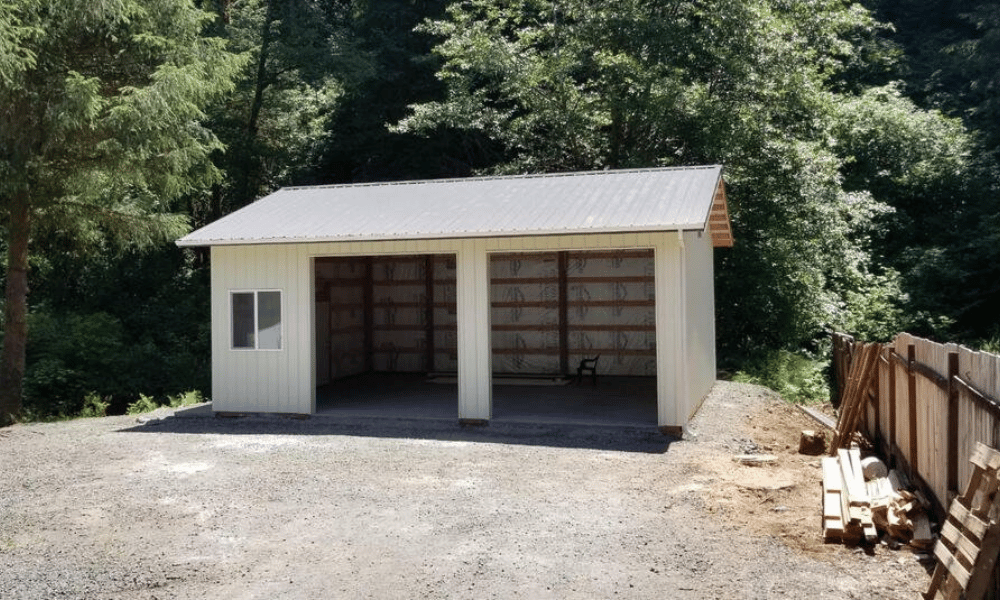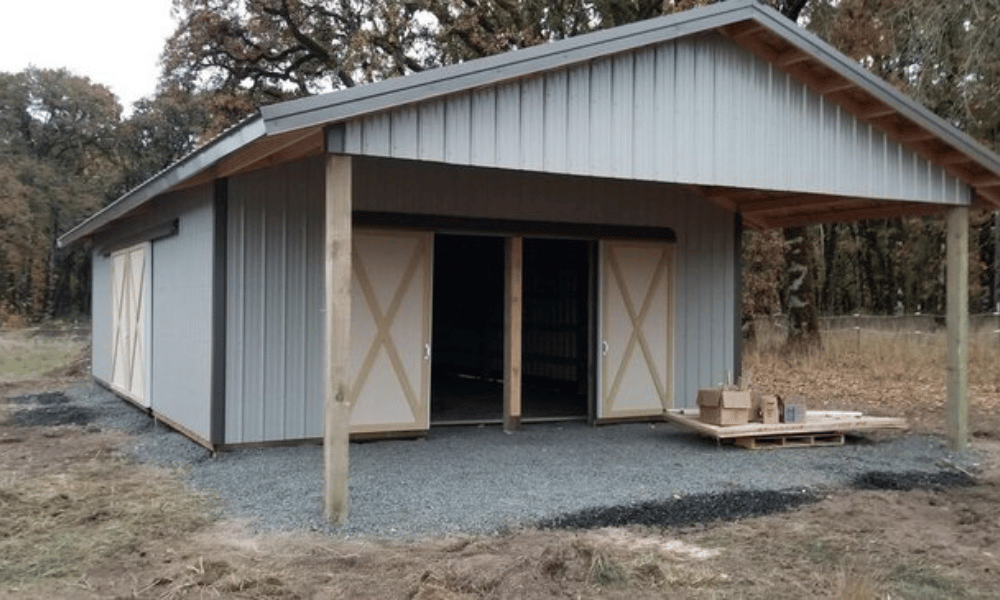Introduction
Building pole structures on farms can be an efficient and cost-effective solution for various agricultural needs. However, the process is not as straightforward as it may seem. Farmers must navigate a complex landscape of local regulations that govern the construction of these structures. Whether you're looking to build a barn, storage shed, or livestock shelter, understanding local regulations for building pole structures on farms is paramount to ensure compliance and avoid costly penalties.
In this comprehensive guide, we’ll delve into the nitty-gritty of local regulations regarding pole buildings. From zoning laws to building permits, we’ll cover everything you need to know before breaking ground on your next farming project.
Understanding Local Regulations for Building Pole Structures on Farms
What Are Pole Buildings?
Pole buildings are versatile structures primarily used in agricultural settings. Unlike traditional buildings that require a foundation, pole barns utilize wooden poles set deep into the ground as their primary support system. This method allows for larger open spaces without interior columns, making them ideal for storage or housing livestock.
Advantages of Pole Buildings
Cost-Effective: Typically less expensive than traditional construction. Quick Construction: Can often be built faster due to simpler design. Durability: Designed to withstand various weather conditions.Importance of Local Regulations
Before embarking on any construction project, it’s crucial to understand local regulations governing building practices in your area. These rules exist to maintain safety standards, ensure structural integrity, and preserve the community's aesthetic.
Key Aspects of Local Regulations
- Zoning Laws: Determine what type of structures can be built in specific areas. Building Codes: Set standards for design, materials, and safety. Permitting Process: Outlines necessary approvals before construction begins.
Zoning Laws Affecting Pole Structures
What Are Zoning Laws?
Zoning laws dictate how land can be used within certain areas—residential, commercial, industrial, or agricultural. For farmers looking to build pole structures, understanding local zoning ordinances is critical.
How Zoning Affects Your Plans
Permitted Uses: Ensure that pole buildings comply with agricultural zoning requirements. Setback Requirements: Determine how far structures must be from property lines. Height Restrictions: Some zones have limits on the height of buildings.Navigating the Permitting Process
Do You Need a Permit?
Generally speaking, most jurisdictions require a permit for constructing new buildings or making significant alterations to existing ones. However, exemptions may apply depending on size and use.
Steps in Obtaining a Permit
Research Local Requirements: Check with your county or city planning department. Prepare Necessary Documents: Surveys, plans, and specifications may be required. Submit Application: Pay attention to submission deadlines and fees. Await Approval: Be prepared for inspections during and after construction.Building Codes You Should Know
Building codes establish minimum safety standards for construction projects. Familiarizing yourself with these codes is crucial when planning your pole structure.

Key Components of Building Codes
- Structural Integrity: Ensure your building can withstand environmental stresses. Safety Standards: Fire exits, electrical installations, and plumbing must meet codes. Energy Efficiency Standards: Some areas have requirements aimed at reducing energy consumption.
Environmental Considerations in Regulation
When constructing pole buildings on farms, environmental regulations also come into play. This includes managing runoff water and protecting natural habitats.
Understanding Environmental Impact Assessments (EIA)
Some projects may require an EIA to evaluate how construction will affect the surrounding environment.
Soil Erosion Control Water Quality Management Wildlife Protection MeasuresThe Role of Homeowners Associations (HOAs)
If you’re farming near suburban developments or gated communities, you might need to consider HOA rules regarding building constructions.
How HOAs Influence Your Project
Design Standards: HOAs may have specific aesthetic guidelines for buildings. Approval Processes: Additional approval from HOA boards could be necessary. Fees and Fines: Non-compliance can result in fines or forced removal of structures.Common Misconceptions About Building Regulations
Many farmers harbor misconceptions about local regulations surrounding pole buildings that can lead to costly mistakes.
Myth 1: “I Don't Need Any Permissions”
http://the-inspiring-blog-2420.mozellosite.comIgnoring permits can lead to hefty fines and demolition orders later down the line.

Myth 2: “All Building Codes Are The Same”
Building codes vary widely by location; understanding your area’s specific codes is essential.
Planning Your Pole Structure Design
Planning is key when it comes to complying with local regulations while maximizing utility and aesthetics in your farm's pole structure design.
Factors To Consider in Design Planning
Intended Use (Storage vs Livestock Shelter) Size Limitations Based on Zoning Material Choices That Meet Code RequirementsHiring Professionals vs DIY Construction
Deciding between hiring professionals or taking a DIY approach should factor in both skill level and familiarity with local regulations.
Pros & Cons of Hiring Professionals
| Pros | Cons | |-------------------------------|-------------------------------------| | Expertise in local laws | Higher upfront costs | | Efficient timelines | Less control over design | | Quality assurance | Selecting reliable contractors can be challenging |
Financing Your Pole Structure Project
Understanding financing options available for constructing pole buildings will ease budget constraints while ensuring compliance with local regulations.
Potential Funding Sources
Agricultural Loans from Banks Government Grants Private InvestorsNavigating Inspections During Construction
Inspections are often part of the permitting process; understanding their role will ensure compliance throughout your project’s lifecycle.
Types of Inspections Required
Foundation Inspection Framing Inspection Final Inspection Prior To OccupancyFrequently Asked Questions (FAQs)
1) What Is The Average Cost To Build A Pole Barn?
The average cost varies widely based on size and material choices but typically ranges from $15-$30 per square foot excluding land preparation costs.
2) Can I Build A Pole Structure Without A Permit?
Most jurisdictions require a permit unless your structure falls below certain size thresholds; always check with your local authorities first!
3) How Long Does It Take To Get A Permit?
The time frame may vary but generally takes anywhere from a few weeks to several months depending on complexity and backlog at municipal offices.
4) Are There Restrictions On The Size Of My Pole Barn?
Yes! Zoning laws often impose restrictions; verify these dimensions through your local planning department before finalizing designs!
5) What Happens If I Don’t Comply With Local Regulations?
Failure to comply can result in fines or even having to dismantle non-compliant structures; always prioritize adherence!
6) Can I Modify An Existing Structure Without A Permit?
Modifications often require permits especially if they alter structural integrity; consult local codes beforehand!
Conclusion
Understanding local regulations for building pole structures on farms is not just a bureaucratic hoop you have to jump through—it's an essential step toward ensuring that your investment is secure while meeting safety standards that protect both you and your assets! By keeping informed about zoning laws, building codes, permitting processes, environmental considerations, homeowner associations' influence—and common misconceptions—you'll position yourself well for successful outcomes in any farming project involving pole buildings! So before you start hammering nails or pouring concrete—get familiar with those regulations! Happy building!